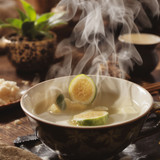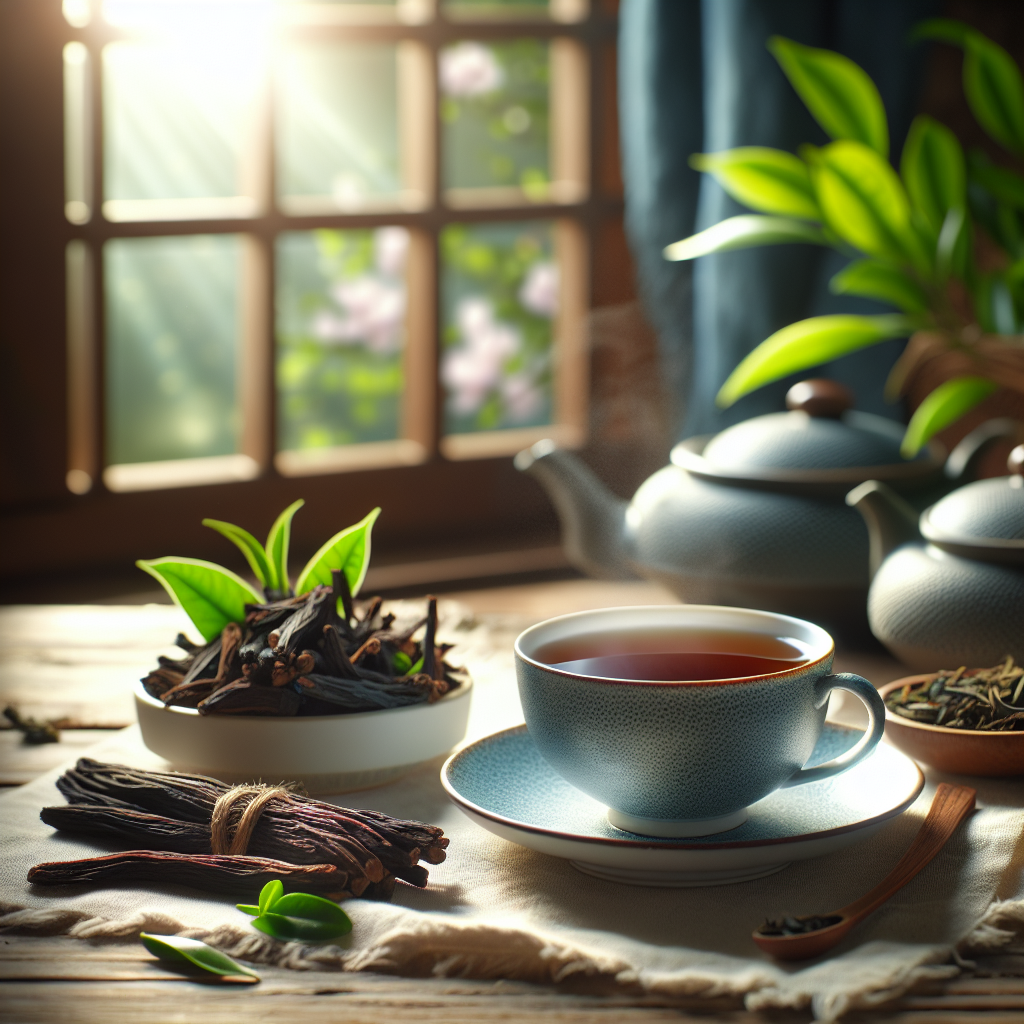

Starwest Botanicals
Organic White Tea Bags
White Tea Bags vs. Green Tea: Why They’re Different White tea and green tea come from the same plant—Camellia sinensis—but they’re made differently. That difference in processing is why white tea...
Last updated: September 10, 2025
Ban Lan Gen — Seasonly Harmony - the root of Isatis indigotica—is a classic TCM herb used to “clear heat & resolve toxicity,” often chosen for throat comfort and seasonal routines. Modern lab studies explore antiviral and immunomodulatory activity in extracts and constituents such as glucosinolates and polysaccharides. PMC+2PMC+2.
It uses everyday tools and steps—just a pot, water, and 15–20 minutes.
Simple prep: Simmer cut root for tea or stir granules into hot water—no special equipment.
Pantry-stable: Dry slices/granules store well in a sealed jar; easy to keep on hand.
Flexible flavoring: Pairs with ginger, lemon, or a touch of honey; slips into broths or congee without fuss.
Easy measuring: Typical short-course amounts (e.g., 9–15 g cut root) are straightforward with a kitchen scale or scoop.
Ban Lan Gen = root; Da Qing Ye = leaf of the same plant. At times the leaf and the root are used together, much like dandelion root and dandelion leaf.
Traditional emphases differ; both appear in classic formulas.
Research interest focuses on glucosinolates (e.g., goitrin family), indirubin/indigo, tryptanthrin, and polysaccharides—primarily lab/animal work.
“Clear heat, resolve toxicity,” often chosen when the throat feels taxed.
Everyday translation: Many people include Ban Lan Gen in seasonal wellness routines alongside rest, hydration, and hygiene.
Research snapshot: Cell/animal studies show extract activity against influenza and other viruses; mechanisms proposed include effects from glucosinolates and polysaccharides. PMC+1
Lyme is bacterial and needs antibiotics. Early treatment (e.g., 10–14 days appropriate antibiotics) usually leads to rapid, complete recovery. Herbs do not replace antibiotics. CDC+2CDC+2
Prophylaxis after a high-risk tick bite: single-dose doxycycline within 72 h may be recommended per IDSA/AAN/ACR guidance—ask your clinician. Drug Information Group
Ban Lan Gen & Lyme: No robust clinical trials show Isatis root treats Lyme in humans. If you use herbs for general wellness, do it adjunctively and under a clinician experienced in tick-borne illness.
Forms & dosing (educational ranges)
| Form | Typical daily amount | How to prepare | Course length |
|---|---|---|---|
| Cut root (decoction) | 9–15 g (context sometimes 10–30 g) | Simmer 15–20 min, covered; strain | Short courses (several days to 1–2 weeks) |
| Granules (often 5:1) | Per label (e.g., 1–2 g, 2–3×/day) | Stir into hot water | As labeled |
| Powder/capsules | Per label (commonly 1–3 g/day equiv.) | With water/tea | As labeled |
| Tincture | Per maker (e.g., 1–2 mL, 2–3×/day) | In water/tea | As labeled |
Adjust with a licensed practitioner; not a substitute for care.
 Throat-Comfort Ban Lan Gen Tea
Throat-Comfort Ban Lan Gen Tea
Ingredients (1 cup)
10–12 g cut Ban Lan Gen
2 thin slices fresh ginger (optional)
10–12 oz (300–350 mL) water
Directions
Add all to a small pot, cover; simmer 15–20 min.
Strain; sip warm. (Add a thin slice of licorice root for sweetness if appropriate.)
Alternative quick prep: Dissolve labeled granules in hot water; add lemon slice if desired.
Correct part: Label should specify root (Ban Lan Gen). Leaf (Da Qing Ye) is different.
Testing: Ask for COA (identity, heavy metals, microbes).
Manufacturing: Prefer GMP facilities; origin disclosed; batch/lot tracking.
Granules: Check extract ratio and excipients (e.g., maltodextrin).
Storage: Cool, dark, dry; air-tight. Rotate every 12–18 months.
Lab-tested • COA available • GMP • Origin disclosed
Typically used short-term; long-term daily use isn’t typical without practitioner oversight.
Pregnancy/Nursing: Avoid unless your clinician approves.
Traditional caution in cold-deficient digestion; rare allergy/GI upset reported.
Interactions: If using immunomodulating or other prescription meds, consult your clinician.
Influenza models (lab): Isatis glucosinolates and breakdown products showed dose-dependent inhibition of influenza A (H1N1) in vitro; a boiling-water extract inhibited influenza A/B in cell assays. PMC+1
Constituents: Erucic acid, polysaccharides, and other fractions show antiviral/anti-inflammatory signals in preclinical models. PMC+1
Granules (clinical): Ban Lan Gen granules have pilot/protocol RCTs for seasonal influenza; larger, high-quality human trials are still needed. PMC+1PubMed
Bottom line: Encouraging preclinical data; limited human evidence. Use educational language and avoid disease claims. PMC
Kitchen medicine, Northern-China style.
In winter courtyards, elders would simmer a bitter, dark tea from Ban Lan Gen when throats felt “hot” or scratchy. Students, travelers, and singers were handed a warm cup before long journeys or performances—“clear the heat, keep the voice,” the saying went.
The “Three Blues.”
Families and shop apothecaries spoke of three siblings from the same plant:
Ban Lan Gen (root) for short, focused courses,
Da Qing Ye (leaf) for upper-airway support, and
Qing Dai (indigo pigment) for targeted uses.
Choosing among them was part tradition, part taste, and part practitioner advice.
Household staple.
By the late 20th century, convenient ban lan gen drink mixes became common in pantries—something to brew at the first hint of seasonal stress or after a day in cold, windy weather. The flavor wasn’t loved, but the ritual was: boil, sip, rest.
| Herb (Common • Latin) | Tradition | Typical Goal (plain-English) | Course Style | Forms & Prep | Taste | Pairs Well With | Who Should Be Cautious |
|---|---|---|---|---|---|---|---|
| Ban Lan Gen • Isatis indigotica (root) | TCM | Throat comfort; short-course seasonal routines | Short-course (days to ~2 weeks) | Cut root tea (15–20 min simmer), granules, capsules | Bitter | Da Qing Ye, Forsythia, Huang Qin | Pregnancy/nursing; cold-deficient digestion; allergy |
| Astragalus • Astragalus membranaceus (Huang Qi) | TCM | Everyday resilience / “daily Qi” support | Daily, long-term (with pro guidance) | Slices in soup/stock; granules; capsules | Mild, slightly sweet | Reishi, Goji, Jujube | Autoimmune conditions/immune meds: consult clinician |
| Andrographis • Andrographis paniculata | Ayurvedic/Modern | Short-course support during seasonal challenges | Short-course | Standardized capsules; tincture; tea (very bitter) | Very bitter | Elderberry, Zinc (non-herb) | GI sensitivity, gallbladder issues; pregnancy |
| Echinacea • E. purpurea/angustifolia | Western | Onset-window support; shorten duration (some users) | Short-course | Tincture/capsules; tea | Earthy, tingling | Elderberry, Vitamin C (non-herb) | Autoimmune disorders; ragweed allergy |
| Elderberry • Sambucus nigra | Western | Comfort during seasonal upper-respiratory times | Short-course | Syrup, gummies, capsules | Fruity | Echinacea, Ginger | Children: choose cooked/prepared products; diabetics mind sugars |
| Reishi (Ling Zhi) • Ganoderma lucidum | TCM (mushroom) | Calm + resilience; sleep-friendly PM routines | Daily, long-term | Extract/granules; tea (long simmer) | Bitter, woody | Astragalus (AM/PM combo), Jujube | Anticoagulants; surgery planning |
| Schisandra (Wu Wei Zi) • Schisandra chinensis | TCM | Stress resilience; balanced energy; flavor for teas | Daily or short-course | Berries (infusion/decoction), extract, capsules | Tart, complex | Reishi (PM), Green tea (AM) | Pregnancy; reflux (can be stimulating) |
DSHEA note: Educational only. Not intended to diagnose, treat, cure, or prevent any disease. Always follow product labels and consult a qualified professional, especially with medications, pregnancy/nursing, or chronic conditions.
Classical function (traditional language): Clears heat, resolves toxicity; benefits the throat.
Nature & channels: Bitter, cold; traditionally said to enter Lung, Heart, Stomach pathways.
Scope: Often chosen for short-course, seasonal routines—especially when the throat feels taxed.
Pairing logic: Commonly paired with Da Qing Ye, Forsythia (Lian Qiao), or Scutellaria (Huang Qin) depending on the pattern a practitioner identifies.
Practicality: It’s kitchen-friendly—root slices for a 15–20 minute simmer or granules stirred into hot water—so everyday people could actually use it.
Why it stuck for centuries:
Clear role in classic categories (not a “do-everything” herb).
Simple prep with household tools.
Predictable, short-course use guided by pattern recognition.
Fits food-as-medicine culture (tea, broth, congee).
Can I take Ban Lan Gen every day?
Short-course use is typical. Daily, long-term use isn’t common without practitioner guidance.
Granules vs cut root—which is better?
Granules are convenient and standardized (check ratio/excipients). Cut root is traditional and easy to brew. Pick based on convenience, label quality, and practitioner advice.
Is Ban Lan Gen antiviral?
Lab and animal studies show antiviral signals (e.g., against influenza); this hasn’t been proven as a clinical treatment in humans. PMC+1
Does Ban Lan Gen treat Lyme disease?
No. Lyme requires antibiotics. Herbs may be used adjunctively for general wellness only with clinician oversight. CDC
Herbal Education, 1st Chinese Herbs. Medical review: Sarah Aries, MS. Reviewed for accuracy/compliance on September 10, 2025.